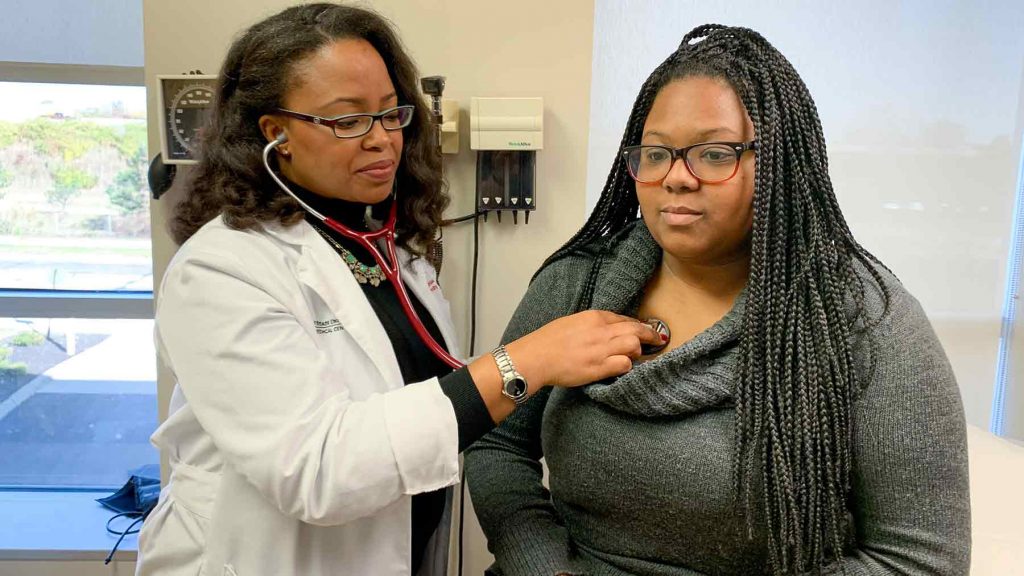What is pancreatic cancer?
extended version
Cancer that starts (or is found) in the pancreas is typically called pancreatic cancer. The pancreas is a small organ that is located behind the stomach on the left side of the body. The large “head” portion of the pancreas is connected to the beginning section of the small intestines, near the gallbladder. It is an important organ because it’s involved in many systems in our body. The pancreas helps us digest food and keep the levels of blood sugar stable, for example.
The pancreas is an important part of the digestive system. The digestive system is the group of organs that work together to give us energy from food and get rid of the parts that we don’t need. The pancreas makes special proteins called enzymes that break food down into smaller parts. These enzymes are made by cells in the pancreas and are sent through the pancreatic duct to the small intestine. Once food is broken down into those smaller parts, these nutrients can be absorbed by the intestines.
The pancreas also releases hormones, which are like chemical messages. Hormones are released from cells into the bloodstream and allow different parts of the body to communicate with each other. The system that controls hormones is called the endocrine system. This mechanism helps the different organs in the body work together to maintain internal balance.
A lot of hormones that have varying functions are made in the pancreas. One of those hormones is insulin. Insulin is released by the pancreas to lower the amount of glucose (sugar) that is in the bloodstream. It does this by helping cells absorb glucose, which they use for energy. Another hormone that is released is glucagon. Glucagon increases the amount of glucose in the bloodstream when the levels get too low. When your blood sugar gets too low, you might start to feel tired and hungry. The pancreas responds to this by releasing glucagon to get glucose out of cells and into the bloodstream. Insulin and glucagon help your body maintain stable energy levels throughout the day. There are more hormones that are released by the pancreas, but these are two of the main ones.
About 60,000 people per year get diagnosed with pancreatic cancer in the United States. More commonly, cancer of the pancreas starts in the part that releases enzymes to digest food. This part includes the cells that line the duct that leads out of the pancreas to the intestines. Cancer in these cells are called carcinomas. Carcinomas are tumors that are found in cells that are part of the lining of a structure. Another name for something that is shaped like a duct is that it is in an “adeno” shape. For this reason, the type of cancer that forms in the duct of the pancreas is called ductal adenocarcinoma. This is the most common form of cancer of the pancreas, as about 85% of patients who are diagnosed with pancreatic cancer have this type of cancer. As tumors in the pancreatic duct continue to grow, they can begin to block the duct and keep the pancreas from working the way it normally does. If the tumors get big enough, they can block the duct completely.
So, what causes these tumors to form in the first place? As we explained in an earlier section, mutations (or mistakes) in DNA that cause uncontrolled cell growth leads to cancer. Some patients have mutations in DNA that they inherited from their parents, which put them at a higher risk of getting pancreatic cancer. Scientists are still doing research on the different ways that ductal adenocarcinoma of the pancreas is formed.
About 75% of pancreatic cancer is found in the anatomic “head” and “neck” aspects of the pancreas. Less commonly it is found in the body and tail of the pancreas. The cells that produce and release hormones in the pancreas are called islet cells. For this reason, tumors that are formed in these cells are called neuroendocrine tumors or islet cell tumors. About 12,000 cases are diagnosed per year in the U.S. There are indications that the number of actual cases might be much higher.
Neuroendocrine tumors or islet cell tumors typically tend to grow slower than the main form of pancreatic cancer (ductal adenocarcinoma). Because they often don’t grow as fast and are created by a different type of pancreas cell, different types of treatment are used to fight islet cell tumors. These types of tumors can be functional or non-functional. Neuroendocrine tumors that are functional are found to release hormones. This increase in hormones creates symptoms that patients start to feel. Functional tumors tend to be named after the main hormone that they increase the release of. For example, if a tumor increases the release of insulin, it is called an insulinoma. Since there are a lot of hormones that the pancreas releases besides insulin and glucagon, there are many potential kinds of pancreatic islet cell tumors.
Another type of neuroendocrine tumor is a carcinoid tumor. These tumors can start in places besides the pancreas but can start or spread to the pancreas. Carcinoid tumors often grow slowly and can spread to other places in the body. They can release different types of hormones including serotonin.
Cancer of the pancreas can spread to different parts of the body. This can happen in any type of pancreatic cancer. Common places that pancreatic tumors spread to are the lungs, liver, and the lining that covers most of the organs in the abdomen (peritoneum). About 60% of islet cell tumors are metastatic, meaning that they advance to different parts of the body.
Pancreatic cancer is typically an unusually aggressive form of cancer that is partly amplified because people tend to only start to notice symptoms after the cancer has already spread. It is the third leading cause of cancer death. But not all tumors that form in the pancreas are malignant. Some are not harmful and may not need to be removed.
In a later section, we will talk about risk factors that can reduce or increase your chances of getting pancreatic cancer. One of those risk factors is having a family history of pancreatic cancer. This does not mean that you will get this type of cancer, but it does put you at a higher risk. There are even many more types of pancreatic cancer. We touched on two the most common forms in this section.
Extended Version
Categories






Written by: Jasmine Mitchell, University of California Santa Barbara
Edited by: Dale O’Brien, MD, Cancer Patients Alliance
Formatting and content by: Raewyn O’Haire, AB, Cancer Patients Alliance
Consultant: Neil Atam, University of California Santa Barbara
Top Reference
Pancreatic resection: a key component to reducing racial disparities in pancreatic adenocarcinoma
Click Here
Click Here for the ACS Journal article